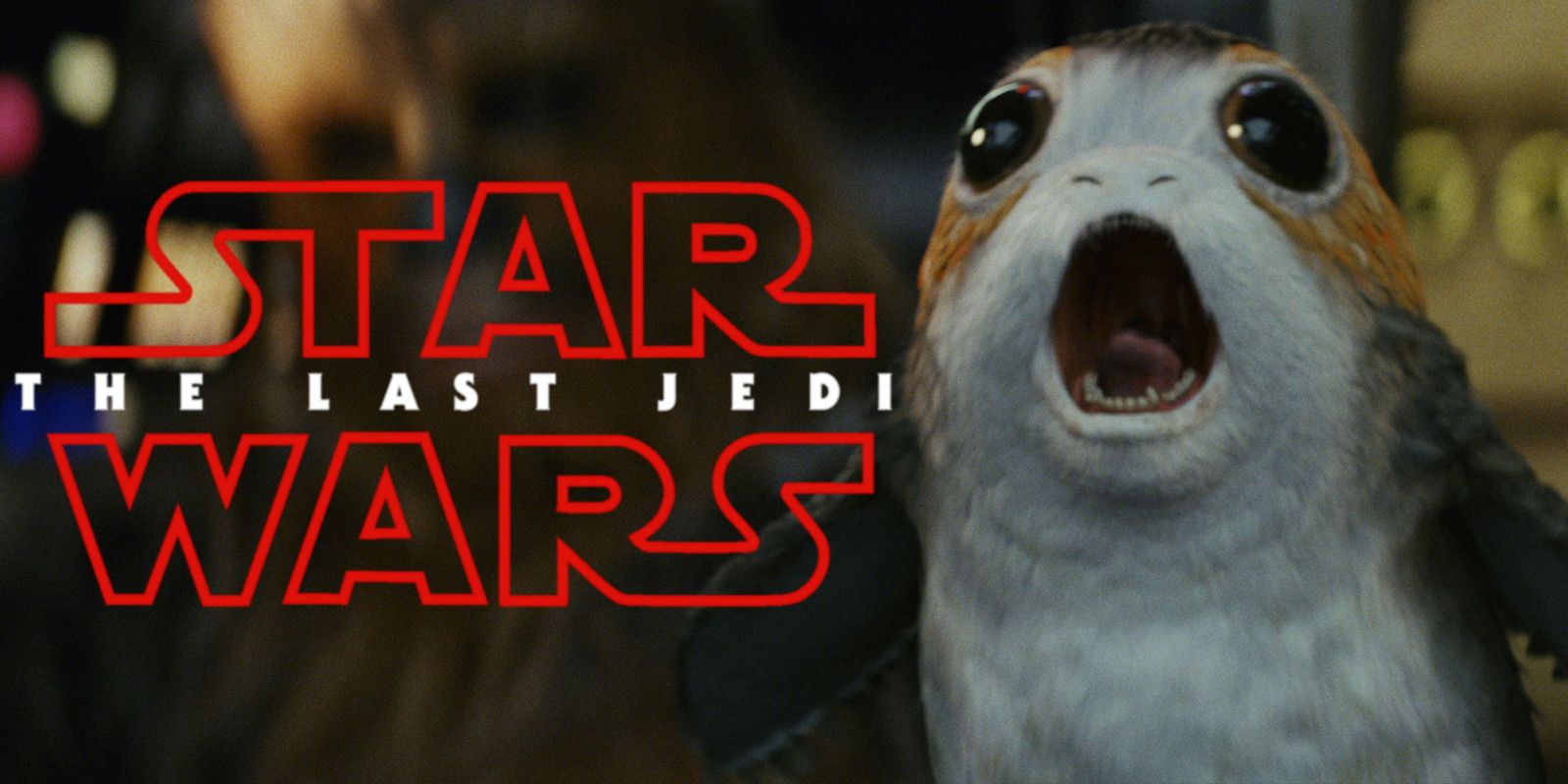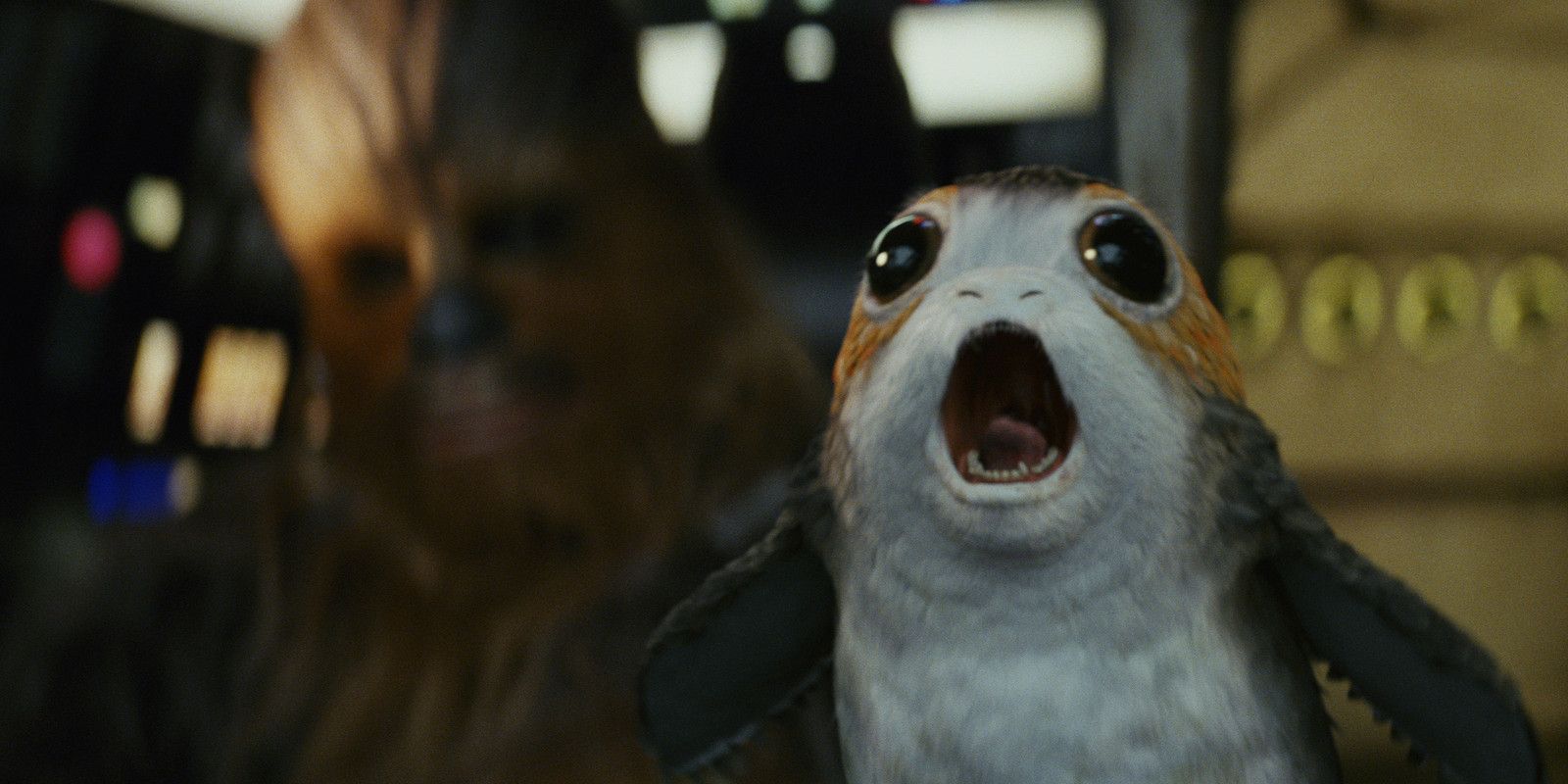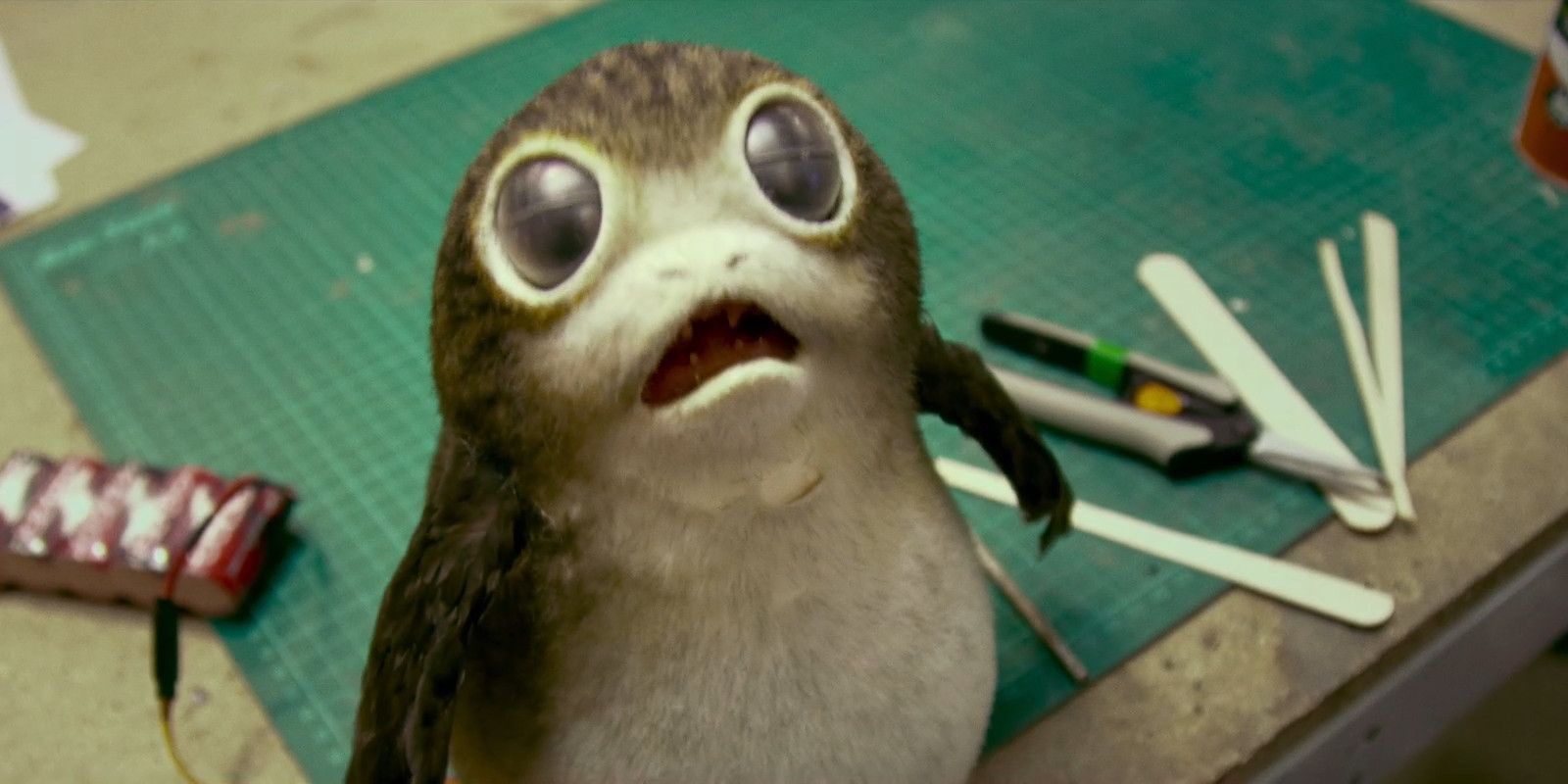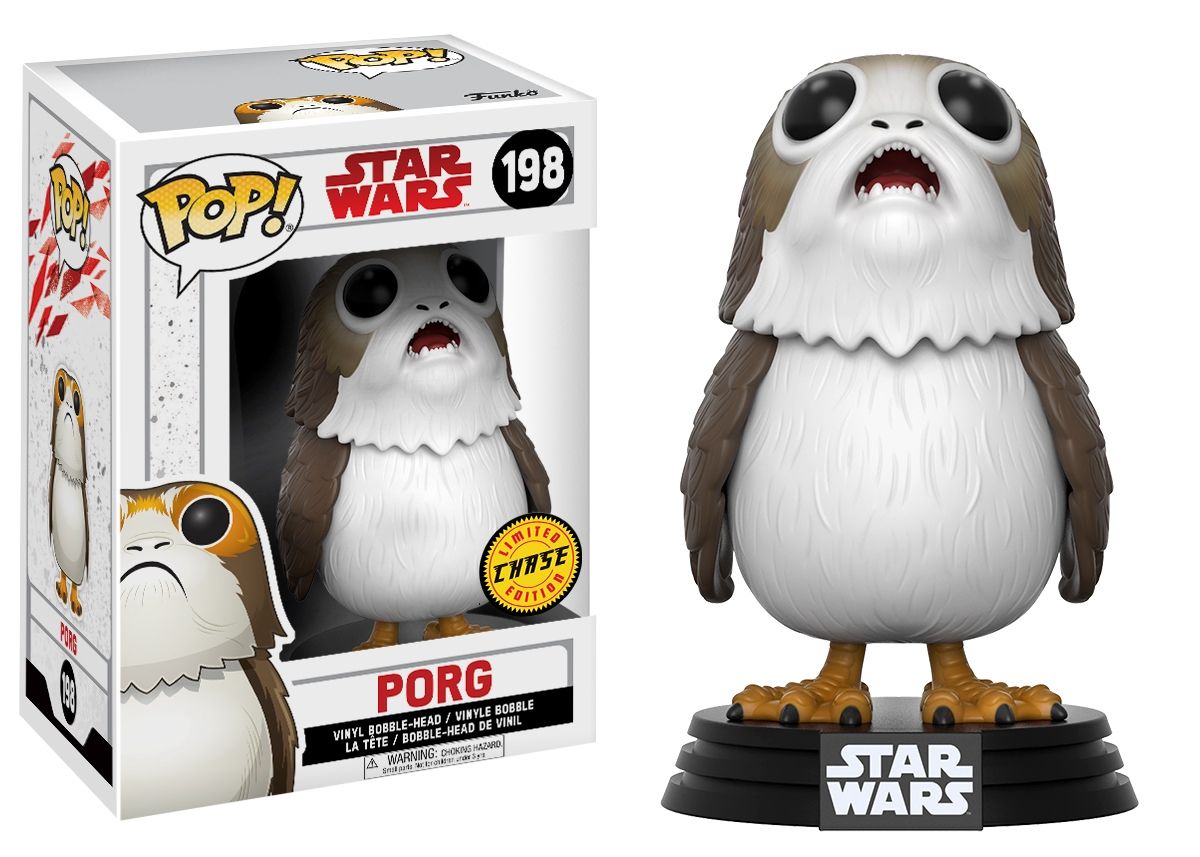Porgs!
Are they The Last Jedi's MVPs? Or the new Ewoks? In other words, are they destined to be adored by the masses, or derided as a cutesy invention that exists purely to sell merchandise?
Everybody wants to know what Porgs are, where they come from, what they're doing in Star Wars, and why they're so darn cute. If you've seen the Last Jedi trailer, you've seen one of them in action, albeit briefly. A Porg appears in a quick-cut shot where Chewbacca seems to be flying the Millennium Falcon. After Chewie lets out one of his trademark roars, there's the Porg, sitting on the console like a plastic bobblehead toy. But this creature is all too alive, letting out a "red alert"-like cry (And garnering an immediate laugh from everyone who watches it.) The Internet was so taken with the little feather-balls that a massive Photoshopped-meme war immediately broke out.
So what are these things? And is there more to them than the cuteness factor? Using everything that's been revealed before their official debut with the film in December, here's an explainer on all things Porg.
In the Movie
Porgs are small bird-like creatures who make their home on the seaside cliffs of the planet Ahch-To. It's unknown what their exact purpose is, but they're presumably part of the island's ecosystem. One of those rocky islands, incidentally, is home where Luke Skywalker has been hiding out since he went into exile after his Jedi academy was destroyed by his nephew. It's where Rey finds him at the end of The Force Awakens and looks to be where most of Rey and Luke's scenes together take place in The Last Jedi.
Biologically speaking, they appear to be around a foot tall. According to The Last Jedi director Rian Johnson, they're capable of flying, but only for short distances. Perhaps their penguin-like bodies make longer flight unsustainable. Porgs have wings that are covered in feathers, and the rest of their body bears what is either a downy plumage or fur, or some combination of both. It's also known that male Porgs are slightly bigger than females.
Porgs build nests to live in, where they raise their baby Porgs. Baby porgs, by the way, are called "Porglets."
According to Lucasfilm's Pablo Hidalgo, Porgs are highly inquisitive creatures. Curiosity is a fun trait — until you remember that it's shared by a certain fur-covered species from Endor. Porgs rarely get visitors on Ahch-To, so they're naturally fascinated by newcomers like Rey and Chewbacca.
No one has been seen interacting with Porgs yet aside from Chewie, but there's every reason to expect the little guys to share the screen with Luke and Rey as well. Since it's known that Chewie takes the Falcon into the air with at least one Porg in tow, it's possible that the ship could return to the likes of General Organa and Poe Dameron, leading to more Porgy shenanigans outside of Ahch-To.
There's a rumor that Chewie even eats one in the film, based on an image of the Wookiee with a white feather sticking out of his mouth.
But keep your grains of salt handy: an unverified report suggests that Porgs may have some kind of connection to the Force, and are considered "sacred" by the fish-like Caretakers that also live on the island. The same report says that Luke is very fond of them.
Might there be more importance to Porgs than we've been led to believe? Probably not, but you never know.
Behind the Scenes
Rian Johnson defends his cuddly little creations by explaining that he was inspired to create Porgs after visiting Skellig Michael (where the Ahch-To location scenes were filmed) and observing the Puffins that live there. At certain times of the year, the island is covered with the adorable Puffins, so Johnson felt that Ahch-To should have an ecological equivalent.
He conceived of them as a combination of Puffins and Penguins, with their intended purpose to primarily serve as companionship for Luke. The island home of the first Jedi Temple looked like an awfully lonely place at the end of The Force Awakens, so it makes sense that the filmmaker would want to add some life to the setting. Johnson also felt the need to give a little comic relief to the story, which is anticipated to be darker than The Force Awakens.
Elsewhere, Johnson has stated that Porgs "don't play a big part" in The Last Jedi's story. But as has already been mentioned, this could be a bit of misdirection on the director's part. Probably not, though.
On set, the Porgs were mostly practical effects, puppets created by Neal Scanlan's creature shop. Scanlan's shop has manufactured puppeteered creatures for all of the modern, Disney-owned Star Wars films. When practical effects weren't feasible, ILM inserted CGI Porgs into the scenes.
Meanwhile, Here On Earth...
Venture out to any department store and you might think that Porgs have taken over the Earth. Since Force Friday — Lucasfilm's now-annual event where the latest Star Wars toys are unveiled in support of the next movie — Porgs have been omnipresent in toy departments and stores.
Whatever size or configuration you wish for Porg-wise, there's a toy for that. You'll find the requisite plush toys in various sizes (Target gave away some four-foot plushes on Force Friday), but that barely scratches the surface. There are Porg T-shirts, hats, ties, posters, mugs, keychains, a children's book, a backpack in the shape of a Porg, lunch boxes, throw rugs, pen toppers, Pez dispensers, Funko Pop collectible figures (yes, more than one), and even cufflinks. And of course they come in Lego form. You'll also find several Chewbacca products where everybody's favorite Wookiee comes with his own Porg.
Basically, if you like it, somebody's already put a Porg on it. They're bound to be a hot item at Christmas. So Disney is pretty much just printing its own money at this point.
Whether you love them or loathe them, you might as well get used to them. Because one thing's for sure: Porgs are here to stay.
But as long as there's no Porg Adventure on TV, Star Wars will be just fine.




